Yu-Gi-Oh! is a famous long-running trading card game. Throughout the game’s history, many archetypes were created, each having a unique gimmick that sets them apart from the others. The franchise also has several anime and manga series to help promote the card game. Many cards from the anime/manga were adapted to the real-life game, often having effects buffed, nerfed or even changed altogether (e.g. Masked HERO Dark Law). However, not every card debuted in the anime/manga make it to the real-life game. Some cards or archetypes get left in the anime/manga. Despite this, some cards will eventually find their way to the real-life game after a long time. For example, it took over ten years for Cyber Angel and Fossils to come to the OCG/TCG. This article will look at some archetypes/series that have yet to be released when this article was written. You can see Part 1 of this article here.
Stormrider
Stormrider is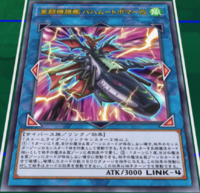 an archetype consisting of Wind CYBERSE monster. The archetype debuted in Season 2 of Vrains, where the villain, Windy, uses it. Like all other archetypes that were released during the Vrains era, its boss monsters are all Link Monsters. Despite only dueling two times, Windy showcased many cards for these archetypes, which enables us to paint a clear picture of how this Deck functions.
an archetype consisting of Wind CYBERSE monster. The archetype debuted in Season 2 of Vrains, where the villain, Windy, uses it. Like all other archetypes that were released during the Vrains era, its boss monsters are all Link Monsters. Despite only dueling two times, Windy showcased many cards for these archetypes, which enables us to paint a clear picture of how this Deck functions.
Rather than just merely focusing on spamming the Field to Link Summon, Stormrider also has a gimmick where it interacts with cards in the Spell/Trap Zones. This gimmick of interacting with Spell/Trap cards has been common with Wind monsters ever since Harpie Ladies. Their interactions with cards in the Spell/Trap zones include:
- negating Trap cards,
- swarming themselves onto the field,
- removing opponent’s back row,
- stealing opponent’s Trap cards and inflicting burn damage.
The archetype’s boss monster is Stormriderflagship Bahamut Bomber Custom, a Rank 4 Link Monster with 3000 ATK. It has a unique monster removal ability, moving an opponent’s monster from the Monster Zone to the Spell/Trap Zones. It also can destroy all cards in the opponent’s Spell/Trap Zones and inflict 500 damage for each card destroyed.
Like Armatos Legio, it’s honestly strange why this archetype wasn’t released, considering it wouldn’t take much to adapt them to real life. Again, this could be due to a combination of Vrains’ troubled production and the reduced anime cards slots in the booster packs during the Vrains era. Anyways, I am confident this archetype will get adapted one day, considering it’s a perfectly functional archetype that a major villain used.
Hydradrive
Hydradrive is a CYBERSE archetype used by the main antagonist of Vrains' Season 2. The character, the 'perfect Ignis' Bohman, uses this archetype. Despite seeing Bohman dueling six times in the entire show, we surprisingly didn't see many cards from this archetype compared to Stormrider and Armatos Legio. Thankfully, the cards showcased is enough to see what this archetype can do.
Hydradrive is an archetype that proves that doing too much is bad. It has multiple gimmicks that barely do anything. They first started as an archetype that focuses on Attribute manipulation and taking advantage of an opponent's monster with similar Attributes. This already sounds bad, as anything that depends on the opponent's play usually doesn't do well. The archetype then decided to double down on the bad by adding randomness, to the mix. Their stats are pretty terrible that they were clearly made to be played with the anime only Judgment Arrow. It also doesn't help that the archetype clogs up your entire Extra Deck with monsters just to make this archetype functional. For example, you need to have all 6 Attribute Rank 1 Hydradrive direct attackers to ensure you have all the attributes covered (that's six slots wasted). The Rank 5 monster, Chimera Hydradrive Dragrid, requires six other Rank 5 Attributes Chimera Hydradrive Dragrid monsters (Chimera Hydradrive Dragrid - Flame, Chimera Hydradrive Dragrid - Aqua, etc) to function.
It's no wonder why Konami hasn't adapted Hydradrive to real life yet. It's a horrible mess that needs to be severely reworked to work.
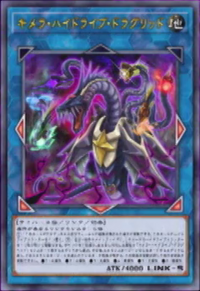
Spirit/Spirit Gem
Spirit/Spirit Gem is 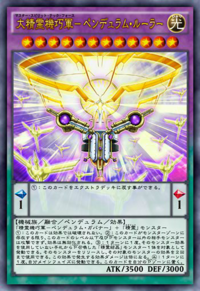 an archetype debuted in the Arc-V anime. The central antagonist, Leo Akaba, used it. Leo Akaba is a villain spanning over three arcs in Arc-V. He's a father of the dueling prodigies, Reiji and Reira Akaba. He's also the father of Ray Akaba, the savior who stopped the main antagonist before the series even started. Therefore, you'll think that Spirit/Spirit Gem will have a good duel showing, right? Unfortunately, that didn't happen. We barely got to see Spirit/Spirit Gem in action, as Leo only engaged in two duels (despite being a central antagonist for most of the series). In the first duel, he only displayed a handful of cards before getting injured and needing saving by his enemies. In the second duel, he was quickly defeated before his turn even ended.
an archetype debuted in the Arc-V anime. The central antagonist, Leo Akaba, used it. Leo Akaba is a villain spanning over three arcs in Arc-V. He's a father of the dueling prodigies, Reiji and Reira Akaba. He's also the father of Ray Akaba, the savior who stopped the main antagonist before the series even started. Therefore, you'll think that Spirit/Spirit Gem will have a good duel showing, right? Unfortunately, that didn't happen. We barely got to see Spirit/Spirit Gem in action, as Leo only engaged in two duels (despite being a central antagonist for most of the series). In the first duel, he only displayed a handful of cards before getting injured and needing saving by his enemies. In the second duel, he was quickly defeated before his turn even ended.
To this day, these are the only Spirit/Spirit Gem cards that were shown: Master Spirit Tech Force - Pendulum Ruler, Spirit Collapse, Spirit Gem - Salamander Core, Spirit Gem - Silpheed Core, Spirit Reactor and Spirit Tech Force - Pendulum Governor. Spirit/Spirit Gem follows a straightforward but effective strategy. Spirit Gem - Salamander Core and Spirit Gem - Silpheed Core destroys Monster and Spell/Traps and inflicts 500 damage. Spirit Tech Force - Pendulum Governor and Master Spirit Tech Force - Pendulum Ruler, are monsters that enable the duelist to use either Spirit Gem's ability twice in one turn by Tributing them. The high ATK of both Spirit Tech Force - Pendulum Governor and Master Spirit Tech Force - Pendulum Ruler (Fusion Pendulum) enables the player to deal a lot of damage to the opponent easily.
It's interesting how Leo was essentially the first character in the series to debut a Fusion Pendulum, yet his Fusion Pendulum wasn't the first one to be adapted to the real-life game.
Cat/Stray Cat
T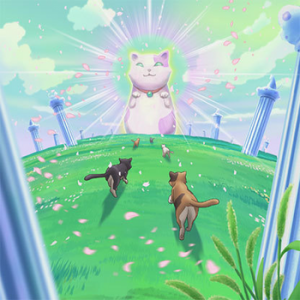 here have been numerous cat-themed cards released in early Yu-Gi-Oh! However, they didn't became an archetype until Yu-Gi-Oh! Zexal where Cathy used it. It was a gag deck used by a gag character, but it surprisingly has an actual coherent strategy.
here have been numerous cat-themed cards released in early Yu-Gi-Oh! However, they didn't became an archetype until Yu-Gi-Oh! Zexal where Cathy used it. It was a gag deck used by a gag character, but it surprisingly has an actual coherent strategy.
The Cat archetype consists of six monsters (two being Xyz monsters) and multiple Spell/Trap supports. The swarming capability of the archetype, thanks to their Spell Card, enables the archetype to Special Summon two Stray Cat to lock the opponent from attacking. If any of the Stray Cat gets destroyed, then Mysterious Cat Transformation can be activated to Special Summon Monster Cat to destroy all your opponent's Level 4 or lower monsters. Their boss monsters are the Rank 1 Twin Tail Cat Lady and Rank 4 Cat Girl Magician. Twin Tail Cat Lady can detach a material to powerup herself permanently, while Cat Girl Magician can detach a material to attack directly. Combined with the Field Spell, the player can deal a large amount of damage while preventing the opponent from attacking with Stray Cat.
These cat cards were actually adapted to the Tag Force game. However, they have yet to come to the actual OCG/TCG. Many of their effects were buffed in the Tag Force games, and certain cards were merged together to make the archetype more consistent. For example, Stray Cat now immediately Special Summons Monster Cat when it's destroyed rather than needing the Spell Card, Mysterious Cat Transformation. Cat Meeting's effect is also added to Stray Cat. The Tag Force games prove that Cat is a functional Deck. It's not a meta deck, but it's a functional casual Deck.
Cookpal
Cookpal is an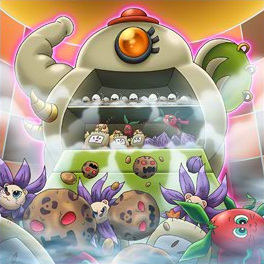 archetype based on food. It's an archetype debuted in the Arc-V anime used by Reed Pepper. Despite only having one real duel, Reed showcased many Cookpal cards to show how this anime archetype functions.
archetype based on food. It's an archetype debuted in the Arc-V anime used by Reed Pepper. Despite only having one real duel, Reed showcased many Cookpal cards to show how this anime archetype functions.
The main gameplay of Cookpal involves swarming the field with low ATK Cookpal monsters. When the Cookpal monsters get destroyed, they are placed under the continuous Trap, Food Cemetery, rather than going to the grave. Food Cemetery is a powerful card that enables the user to add Cookpal monsters from the Deck based on the number of Cookpal monsters placed under it. Once there are enough Cookpal monsters under Food Cemetry, the player can use the Continuous Spell: Regal Recipes' effect to swarm the field with the Royal Cookpal monsters. All Five of the Royal Cookpal monsters have the same stats and effects (e.g. anti-summoning and ATK boosting effects).
Ancient Treasure
Ancient Treasure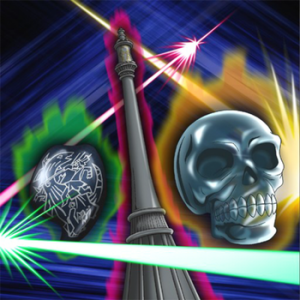 is a card series that debuted in the 5D anime. In terms of design, they bear a strong resemblance to Chronomaly. However, gameplay-wise, they're entirely different. The archetype is owned by Tenzen Yanagi and was played by Yusei temporarily. Ancient Treasure was used in a total of two duels.
is a card series that debuted in the 5D anime. In terms of design, they bear a strong resemblance to Chronomaly. However, gameplay-wise, they're entirely different. The archetype is owned by Tenzen Yanagi and was played by Yusei temporarily. Ancient Treasure was used in a total of two duels.
Although only a handful of cards were shown, we got to see the basic gameplay of this card series. All Ancient Treasure monsters have effects that punish the player, either by inflicting damage to the player or forcing the player to discard. The primary win condition of this deck is playing damage reversal cards, such as "Curse Reflection Doll" and "Triangle O", to redirect all the damage to the opponent, winning the game.
The Ancient Treasure card series was actually adapted to the Tag Force game, playing exactly like the anime. It's a very gimmicky burn deck. It's not the best, but it's definitely playable. In the OCG/TCG, Konami only adapted Piri Reis Map to the real-life game.
Drone
Drone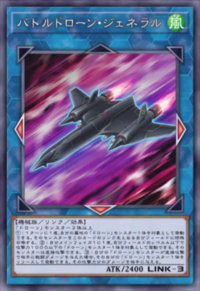 is an archetype debuted in Vrains. Blood Shepherd, a bounty hunter duelist, uses this archetype. The archetype consists of Machine-Type monsters. Like most anime archetypes debuted in the second season of Vrains, we actually got to see many Drones in action. Enough that we can make out what the Deck does.
is an archetype debuted in Vrains. Blood Shepherd, a bounty hunter duelist, uses this archetype. The archetype consists of Machine-Type monsters. Like most anime archetypes debuted in the second season of Vrains, we actually got to see many Drones in action. Enough that we can make out what the Deck does.
From what was shown, the Drone is an anti-Link Deck. The smaller monsters swarm themselves onto the Field. They can also generate Drone Tokens for Link Summoning. The archetype also has access to Fusion Summoning and Synchro Summoning. Drone's Extra Deck monsters have aggressive effects ranging from powering up ATK to inflicting a large amount of burn damage to defeat the opponent quickly. The Drone archetype has a wide range of Spell and Trap supports. Their Traps and Spells range from protecting the player or swarming the Field to anti-Link plays.
Shepherd was such an essential character throughout Season 2 of Vrains. In fact, that character remained as part of the cast even in the final season, yet none of his cards was ever released. This is despite Shepherd participating in many important duels. He shares this fate along with many important characters in Vrains (e.g. Windy, Lightning, Bohman, etc). This is again, could be due to Vrains' troubled production.
Helixx
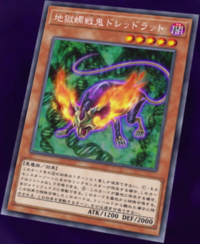 Helixx is an archetype debuted in Vrains. It was used by Doctor Genome against Go Onizuka when Go was suffering from a midlife crisis. The name Helixx is derived from the DNA molecule shape. The monsters' design is genetics-themed, comprising of mutated monsters. We never got to see much of the Deck.
Helixx is an archetype debuted in Vrains. It was used by Doctor Genome against Go Onizuka when Go was suffering from a midlife crisis. The name Helixx is derived from the DNA molecule shape. The monsters' design is genetics-themed, comprising of mutated monsters. We never got to see much of the Deck.
From what was shown, Helixx's main deck monsters are made up of Level 5 or higher monsters. They have effects that allow them to be summoned onto the Field without Tribute (in a very slow way). Only two Link Monsters were shown, and their effects were increasing ATK and reducing effect damage to zero.
If Konami ever decides to release these cards, they need to be buffed very badly. However, they have such uninspired gameplay that I'm glad that they're not released in real life.




